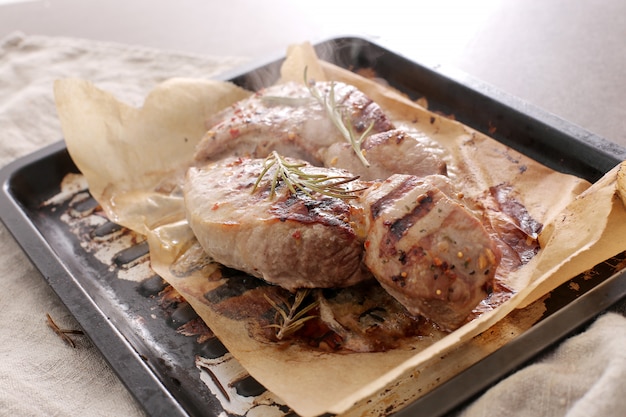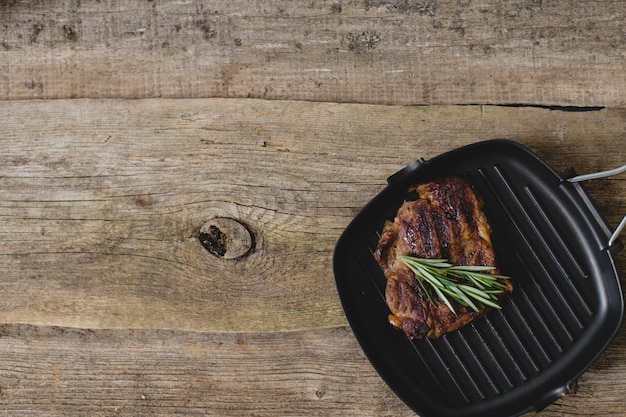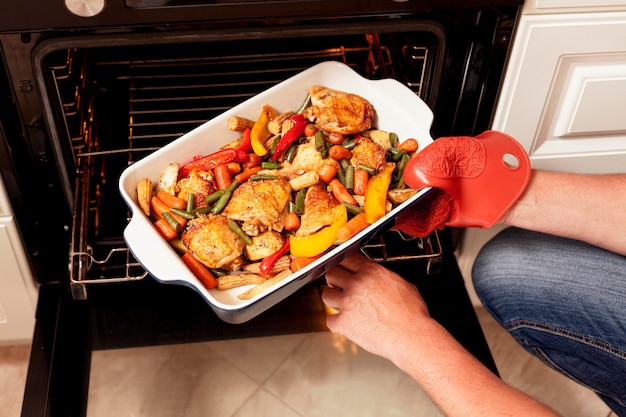Let's face it, pork tenderloin is one of those dishes that can leave you feeling like a culinary hero or a total flop. I’ve been there, trust me. There have been times I’ve proudly pulled out a beautifully browned, perfectly juicy tenderloin, and other times when it’s come out dry and stringy – let’s just say I’ve had my fair share of both triumphs and disasters. But over the years, I've learned a thing or two, and I'm here to share my wisdom. Consider this your ultimate guide to oven-roasted pork tenderloin, taking you from someone who might be a little intimidated by the whole process to someone who can consistently create a delicious and impressive meal.
Part 1: The Importance of a Good Pork Tenderloin

Before we even begin talking about techniques and recipes, let's get one thing straight: choosing the right pork tenderloin is crucial. It's like building a house – you can't expect a magnificent mansion if the foundation is shaky, right? So, the first step is finding a tenderloin that's going to work with you, not against you.
1.1 Picking the perfect pork tenderloin
Not all pork tenderloins are created equal. You want one that's firm to the touch, not overly soft or squishy. And I'm not talking about a tenderloin that looks like it just finished a marathon. A little bit of marbling is great – it adds flavor and moisture – but you don't want one swimming in fat. Think of it like a good pair of jeans: a little bit of stretch, but not so much that you can’t keep your trousers up, right?
Here's a quick visual guide to help you pick the perfect tenderloin:
| Characteristic | Good | Bad |
|---|---|---|
| Texture | Firm, not soft or squishy | Soft, mushy, or overly yielding |
| Color | Evenly pink, not pale or discolored | Discolored areas, overly pale, or grayish tones |
| Marbling | Some marbling, not too much fat | Excessive fat, or lack of marbling |
1.2 Knowing Your Pork Tenderloin
Before you dive into different cooking techniques and spice rubs, it's essential to understand what you're working with. Pork tenderloins come in different sizes, and that's going to affect your cooking time. Get to know your piece of meat! Check the size, weigh it, and get a feel for it. Don't be afraid to get your hands a little dirty! You can't have a good relationship with your food if you don't get to know it, right?
Part 2: Preparing for Perfection

Now that you have your ideal pork tenderloin, it's time to get down to the nitty-gritty. This is where you start turning a simple piece of meat into a culinary masterpiece. It's all about setting yourself up for success.
2.1 A Little Trim, a Lot of Flavour
You might be thinking, "Trim? Why do I need to trim?" Well, trimming those little bits of fat and silver skin can make a big difference. They can get in the way of a beautiful browning and prevent even cooking. Just a quick trim, a little bit of care, and you're good to go. But remember, don't go overboard! A little bit of fat is your friend, it adds flavor and helps keep the meat juicy.
2.2 Spicing Things Up
This is where the real fun begins! Seasoning your pork tenderloin is like dressing up your finest outfit – it's about expressing your own personal style. Don't be afraid to experiment, but there are some tried-and-true classics that always work. Salt and pepper are the foundation, of course, but then the possibilities are endless!
Think about what flavors you love. Do you like a bit of spice? Try a blend of paprika, cumin, and chili powder. Are you a herb lover? Go for rosemary, thyme, or sage. And don't forget about the magic of garlic and onion powder – they add depth and richness you won't regret.
Here are a few tried-and-true spice rubs to get you started:
- Herby Rub: Combine dried rosemary, thyme, sage, and oregano with salt, pepper, and garlic powder for a classic, aromatic flavor.
- Spicy Rub: Mix paprika, cumin, chili powder, cayenne pepper, garlic powder, and onion powder for a touch of heat.
- Sweet and Smoky Rub: Combine brown sugar, smoked paprika, garlic powder, onion powder, and black pepper for a complex and flavorful rub.
Part 3: Mastering the Oven-Roasted Technique

Now that you've got your perfectly prepped tenderloin, it's time to put it in the oven and let the magic happen. But don't worry, it's not as intimidating as it sounds. Just follow these simple steps, and you'll be on your way to a delicious dinner.
3.1 Preheating is Key
You wouldn't start a race without warming up, would you? The same goes for your oven. Preheat it to the right temperature before you even think about putting your tenderloin in. It ensures even cooking, a golden brown crust, and a juicy interior. Trust me, it's worth the extra few minutes.
3.2 The Power of Roasting
You've got your seasoned tenderloin, your preheated oven, now it's time for the grand finale: roasting. You've got options here. Some prefer a high heat, others a more gentle approach. I'm a firm believer in a medium heat for an even cook. A good rule of thumb is 375°F (190°C), but feel free to experiment. Just make sure you're checking the temperature throughout the process.
Here's a handy table for roasting times based on tenderloin size:
| Tenderloin Weight (lbs) | Roasting Time (minutes) |
|---|---|
| 1-1.5 lbs | 20-25 |
| 1.5-2 lbs | 25-30 |
| 2-2.5 lbs | 30-35 |
| 2.5-3 lbs | 35-40 |
Remember, these are just guidelines. It's always best to check the internal temperature of your tenderloin to ensure it's cooked to your liking.
3.3 The Importance of Rest
This is a big one, folks. Don't be tempted to dive into your tenderloin the moment it comes out of the oven. Give it a rest! Think of it like a marathon runner who needs a cool down. It allows the juices to redistribute throughout the meat, resulting in a tender and juicy final product. I usually aim for 10-15 minutes, but longer is always better.
Part 4: The Art of Doneness
Now, this is where it gets a little tricky. Everyone has their own preference for how they like their pork. Some love it well-done, others prefer it medium-rare. The key is to make sure it's cooked to a safe internal temperature. No one wants to get sick, right?
4.1 The Temperature Test
The most reliable way to determine doneness is with a meat thermometer. You want your tenderloin to reach an internal temperature of 145°F (63°C). That's the safe zone, my friends. Don't be afraid to check it multiple times throughout the cooking process. You've come this far, don't ruin it all by undercooking.
4.2 Visual Clues
If you don't have a meat thermometer, there are some visual clues you can look for. The juices should run clear, not pink, and the meat should be firm to the touch. But honestly, a thermometer is your best bet. It's more accurate and takes the guesswork out of things.
Part 5: The Ultimate Guide to Sauces and Sides
Okay, your pork tenderloin is cooked to perfection, it's resting, and you're about to lose your mind with excitement. But wait! Don't forget about the sauces and sides that will make your meal complete.
5.1 Pan Sauce Perfection
One of the best things about oven-roasted pork tenderloin is the delicious pan sauce you can create from the leftover bits. Think about it: all those caramelized bits of fat and flavour clinging to the bottom of your pan, just waiting to be transformed into a culinary masterpiece.
Here's how to make a simple pan sauce:
- Once the tenderloin is out of the oven, pour off any excess fat from the pan.
- Add a splash of wine or broth (white, red, or chicken broth all work great) to the pan, scraping up the browned bits from the bottom.
- Bring it to a simmer and cook until the liquid has reduced by about half.
- Stir in a tablespoon of butter and whisk until it's melted and emulsified.
- Season with salt and pepper to taste.
For a richer, more complex pan sauce, try adding a tablespoon of Dijon mustard, chopped fresh herbs, or a squeeze of lemon juice.
5.2 side dishes That Sing
Now for the side dishes. With pork tenderloin, the sky's the limit. Here are a few of my favorites:
- Roasted Vegetables: Think about asparagus, Brussels sprouts, carrots, and butternut squash. Roast them along with your tenderloin for a super simple and satisfying meal.
- mashed potatoes: A classic for a reason! Creamy, comforting, and perfect for soaking up all the delicious pan sauce.
- rice pilaf: A light and flavorful option that complements the richness of the pork tenderloin.
- Apple Slaw: Sweet and tart, apple slaw adds a refreshing touch to your meal.
- green beans Almondine: The contrasting textures and flavors of this classic side dish pair beautifully with pork tenderloin.
Part 6: Creative Variations and Ideas
You've got the basics down, but now it's time to get creative! This is your chance to put your own unique spin on things. Experiment with different rubs, marinades, and side dishes. The possibilities are truly endless!
6.1 Rub It Good
Instead of just salt and pepper, why not try a flavorful rub? There are endless possibilities!
Here are a few ideas to get your creative juices flowing:
- Mediterranean Rub: Combine dried oregano, thyme, rosemary, garlic powder, onion powder, and a pinch of red pepper flakes for a vibrant flavor profile.
- Maple-Glazed Rub: Mix brown sugar, maple syrup, paprika, garlic powder, onion powder, and black pepper for a sweet and savory rub.
- Ginger-Soy Rub: Combine grated ginger, soy sauce, garlic powder, onion powder, and a sprinkle of black pepper for a flavorful Asian-inspired rub.
6.2 Marinate It Up
Marinades are a great way to add depth of flavour and tenderness to your pork tenderloin. They can be as simple or as complex as you like.
Here are some ideas for marinades:
- Citrus Marinade: Combine orange juice, lemon juice, olive oil, garlic, and herbs like rosemary and thyme for a bright and refreshing flavor.
- Honey-Garlic Marinade: Mix honey, soy sauce, garlic, ginger, and a touch of sesame oil for a sweet and savory marinade.
- Red Wine Marinade: Use red wine, balsamic vinegar, Dijon mustard, garlic, and fresh thyme for a rich and complex flavor.
Remember, marinades work best when they're allowed to penetrate the meat for at least 2 hours, but even better overnight for the ultimate flavor infusion.
Part 7: Troubleshooting Tips
Let's be real, things don't always go according to plan. Sometimes your tenderloin comes out dry, or it's not as flavorful as you'd hoped. But don't worry, I've got you covered.
7.1 Dry Pork? Don't Panic!
If your tenderloin comes out dry, there are a few things you can do:
- Don't Overcook It: The most common reason for dry pork is overcooking. Use a meat thermometer and aim for an internal temperature of 145°F (63°C).
- Don't Overcrowd the Pan: If your tenderloin is too close to other items in the pan, it won't cook evenly. Give it some space!
- Don't Forget to Rest: Allowing the tenderloin to rest after cooking is essential for retaining moisture.
- Add Moisture: Use a pan sauce or a flavorful glaze to add moisture and enhance the flavor of your pork tenderloin.
7.2 Bland Pork? Spice it Up!
If your tenderloin isn't as flavorful as you'd like, you can easily remedy it:
- Add a Pan Sauce: A pan sauce can add a burst of flavour and moisture to your tenderloin.
- Top It With a Glaze: A sweet and savory glaze can add a finishing touch to your pork.
- Serve it With Flavorful Sides: Pairing your tenderloin with bold and flavorful side dishes can enhance the overall taste.
Part 8: Storing and Reheating Leftovers
You've got your delicious pork tenderloin, and you've probably got enough leftovers for days. But how do you store them properly and make sure they taste just as good the next day?
8.1 Storing Leftovers
Once your tenderloin has cooled down, store it in an airtight container in the refrigerator. It will keep for 3-4 days.
8.2 Reheating Leftovers
The best way to reheat your pork tenderloin is in the oven. Preheat your oven to 350°F (175°C), and heat the tenderloin for about 15 minutes or until it's heated through.
You can also reheat it in the microwave, but it might not be as flavorful. Microwave it on high for about 1 minute per slice.
FAQs
Q1. Can I cook a pork tenderloin in a slow cooker?
While you can technically cook a pork tenderloin in a slow cooker, it's not the ideal method. Slow cookers are designed for tougher cuts of meat that benefit from the long, slow cooking process. Pork tenderloin is already tender, so it's more likely to become dry and overcooked in a slow cooker.
Q2. What are some other ways to cook a pork tenderloin?
You can cook pork tenderloin in various ways! Here are a few options:
- Grilling: Grill your tenderloin over medium heat for about 10-15 minutes per side.
- Pan-Searing: Sear your tenderloin in a hot pan for about 5-7 minutes per side.
- Air Fryer: Cook your tenderloin in an air fryer at 375°F (190°C) for about 15-20 minutes.
Q3. How do I know if my pork tenderloin is fully cooked?
The best way to determine doneness is with a meat thermometer. Your pork tenderloin should reach an internal temperature of 145°F (63°C) to be safe.
Q4. What are some good substitutes for pork tenderloin?
If you're looking for a substitute for pork tenderloin, you can try:
- pork loin: Pork loin is a larger cut of meat that can be roasted or grilled.
- chicken breast: Chicken breast is a lean and versatile option that can be cooked in many ways.
- Salmon: Salmon is a flavorful fish that can be roasted, grilled, or pan-seared.
Q5. What are some tips for preventing my pork tenderloin from drying out?
Here are some tips for keeping your pork tenderloin moist:
- Don't Overcook It: Use a meat thermometer to ensure your tenderloin reaches an internal temperature of 145°F (63°C) but no more.
- Rest It: Allow your tenderloin to rest for 10-15 minutes after cooking to redistribute the juices.
- Add Moisture: Use a marinade or pan sauce to add moisture to your tenderloin.
- Cook It Low and Slow: Using a lower oven temperature and cooking for a longer period of time can help keep the meat moist and tender.
Everyone is watching

Prime Rib Roast Cooking Time Chart: Per Pound Guide
Cooking TipsPrime rib roast. Just the name conjures images of lavish dinners, crackling fires, and hearty laughter. It’s ...

How Long to Bake Potatoes in the Oven (Perfect Every Time)
Cooking TipsBaked potatoes are a staple in my kitchen. They're incredibly versatile, delicious, and surprisingly easy to m...

Perfect Rice Every Time: The Ultimate Guide to Cooking Rice
Cooking TipsAs a self-proclaimed foodie, I've always been a bit obsessed with rice. It's the foundation of countless cuisi...

The Ultimate Guide to Cooking Asparagus: Tips, Techniques, and Recipes
Cooking TipsAsparagus. The mere mention of this spring delicacy conjures up images of vibrant green spears, crisp and burs...

Ultimate Guide to Cooking the Perfect Thanksgiving Turkey
Cooking TipsThanksgiving. Just the word conjures up images of overflowing tables laden with delicious food, the scent of r...
